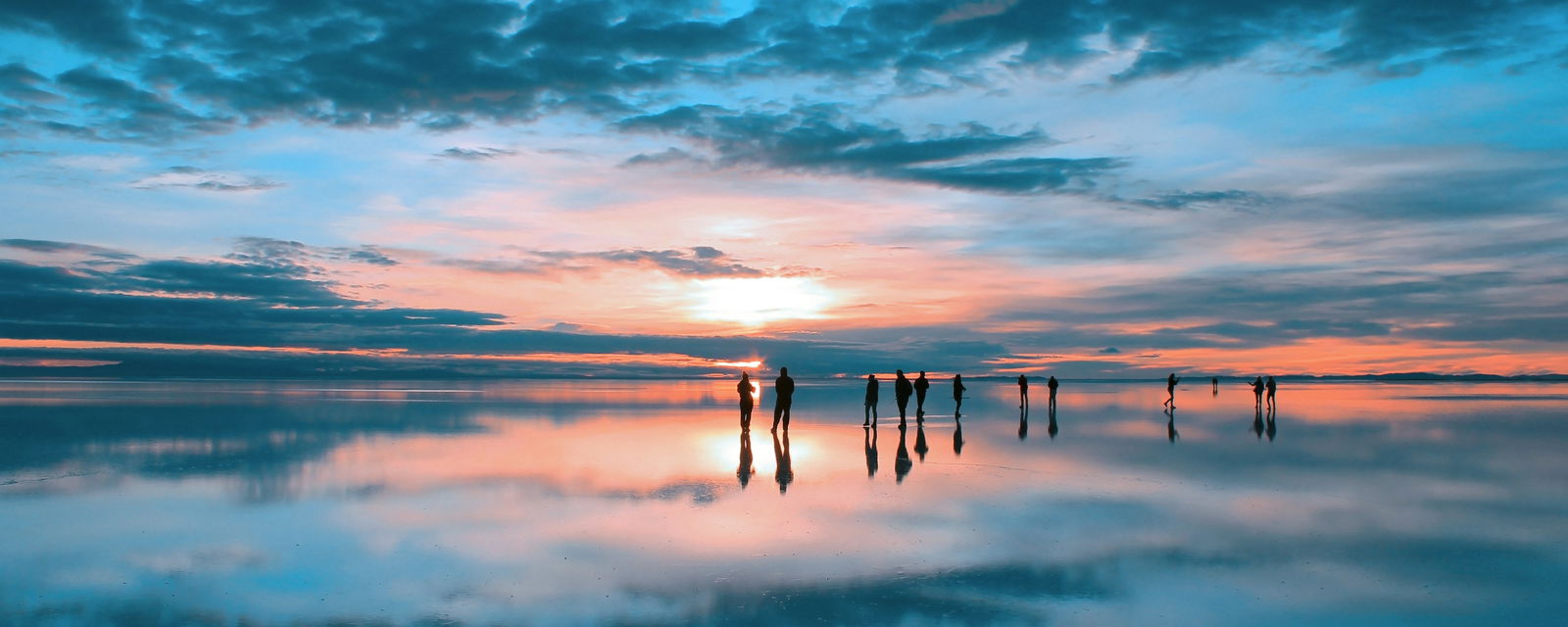


The gateway to the world’s largest salt flats, Uyuni is the chosen destination for many who want to explore this natural phenomenon. As it has grown as a tourist destination for this reason, Uyuni increasingly caters to those looking for local culture and flavor. In the city itself, you can find numerous street vendors, shops and artisans. The town also has one of the largest street markets in the area. The salt flats themselves however will always be the primary draw in Uyuni. Thought to have been created as a result of the evaporation and transformation of prehistoric lakes, the flats span up to 80 miles across. After it rains, it serves in essence as a gigantic mirror—truly a sight not to be missed.
While given the nature of the salt flats, vegetation and wildlife are not necessarily plentiful, there are certain exotic/rare species that can be found around the salt flats. These include: South American flamingos, the Andean fox as well as giant cacti.
Beyond the salt flats, a popular attraction is also the train cemetery. Mostly used by mining companies, the trains largely stopped running in the 1940s. Left just sitting there and thus abandoned, the trains ultimately became known as a cemetery of sorts.
For a smaller town, Uyuni has a few museums certainly worth checking out. One such venue: Museo Arqueología y Antropológico de los Andes Meridionales actually features mummies and numerous fossils. While the train museum offers glimpses of the region’s mining past.

Uyuni experiences winter from June to August. The region's high altitude contributes to cold temperatures during this season, with daytime highs ranging from the 40s to low 50s Fahrenheit and cold nights. Winter is an ideal time to visit the famous Uyuni Salt Flats, also known as Salar de Uyuni, as the dry season brings clear skies and vast white landscapes, creating the perfect backdrop for stunning photography.

Spring in Uyuni, from September to November, brings milder temperatures and blooming landscapes in the surrounding areas. It's a beautiful time to explore the nearby Isla Incahuasi, an island in the salt flats covered with giant cacti and offering panoramic views of the shimmering salt desert.

The summer season in Uyuni, from December to February, is characterized by warm and pleasant temperatures during the day, with highs in the 60s to low 70s Fahrenheit. Summer is a popular time for tourists to visit Uyuni to witness the Salar de Uyuni's rainy season, which transforms the salt flats into a massive mirror, reflecting the sky and creating an otherworldly illusion.

Fall in Uyuni, from March to May, brings mild temperatures and beautiful autumn colors in the surrounding landscapes. It's an excellent time to venture beyond the salt flats and explore the stunning landscapes of the Eduardo Avaroa Andean Fauna National Reserve, where geysers, colorful lagoons, and unique rock formations await.
